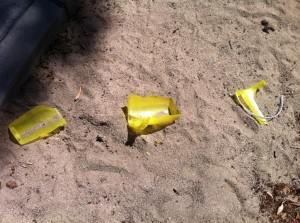 Goods that need replacing every few years, what is known as planned obsolescence, deals a serious blow to the goals of sustainability. When a poorly made object fails, ends up in the waste stream, and leads a consumer to purchase a new widget, there are environmental ramifications for the planet and economic ones for the individual. The resources required to build a new widget and monetary means to purchase it negatively impact both parties. While durable products may lead to fewer items sold, companies the design and build their goods to last longer will benefit from a positive public perception, leading to increased revenue and market share. Another concern to consider is that of perceived obsolescence, the idea that items which work fine and last a long time are no longer fashionable, despite their functionality.
Goods that need replacing every few years, what is known as planned obsolescence, deals a serious blow to the goals of sustainability. When a poorly made object fails, ends up in the waste stream, and leads a consumer to purchase a new widget, there are environmental ramifications for the planet and economic ones for the individual. The resources required to build a new widget and monetary means to purchase it negatively impact both parties. While durable products may lead to fewer items sold, companies the design and build their goods to last longer will benefit from a positive public perception, leading to increased revenue and market share. Another concern to consider is that of perceived obsolescence, the idea that items which work fine and last a long time are no longer fashionable, despite their functionality.
A recent post asked, “Is Environmentalism Compatible with the Market Economy and the American Way?” In some respects it will have to be. At some point, companies that make durable, sustainable products will win out over those that fail to work within the confines of nature and the reality of physics.
Here are a few examples from everyday life that illustrate the importance of durable products. A recent product review of the biodegradable beach pail from Zoë b Toys drove home the need for products that last. After testing out the bucket and shovel, I started to notice several broken shovels and debris scattered about the playground where my son “explores” and wanders. These cheap, and inexpensive, products are not made to last more than the summer season during which they are sold. Over a child’s lifetime, they could easily go through a handful of pails that cumulatively cost as much, if not more, than the bucket and accessories from Zoë b Toys. This does not include the environmental cost, i.e. the oil used to make the plastic or the non-biodegradable waste that accumulates.
Another example is the low end vacuum cleaner I purchased several years ago. After a year or so, the vacuum spat out particles that it ought to have collected. While it may have been under warranty, the lack of quality caused it to become obsolete in a short time. Despite having spent somewhere in the range of $100 on the vacuum, I replaced it less than two years after purchasing it. I was reluctant to spend more money, but the replacement, which cost more, but has lasted (and done a far superior job) has proven both durable and effective, reducing the need for a revolving door of vacuum cleaners.
Products that are constructed in an “Earth friendly” manner, by using renewable and sustainable materials, will be one key to the puzzle of a sustainable future. The other will entail goods that are built to last. Ideally, this new line will take into account the end of its life cycle as well, a key part of cradle to cradle design, manufacturing, and disposal.
[Author's Image]

